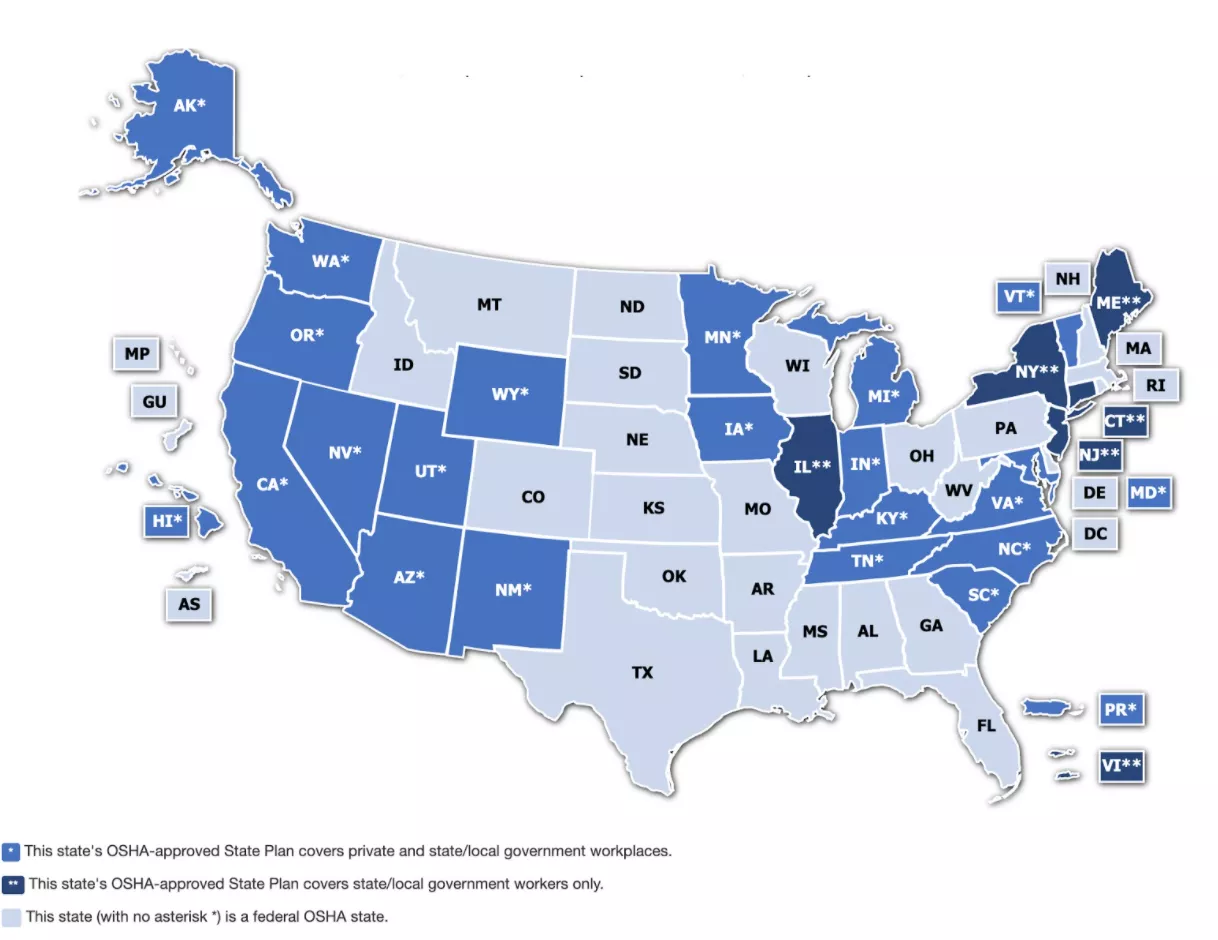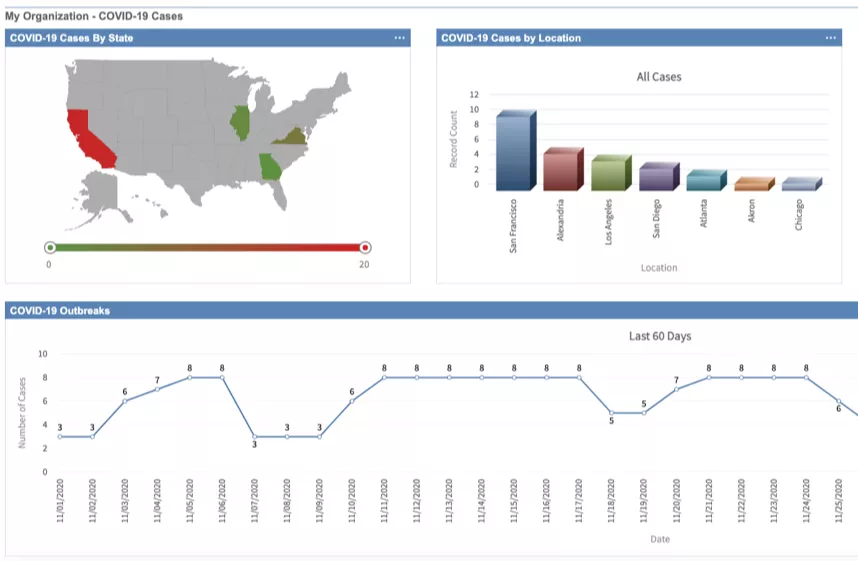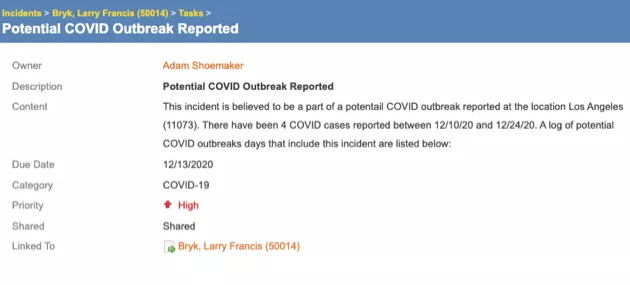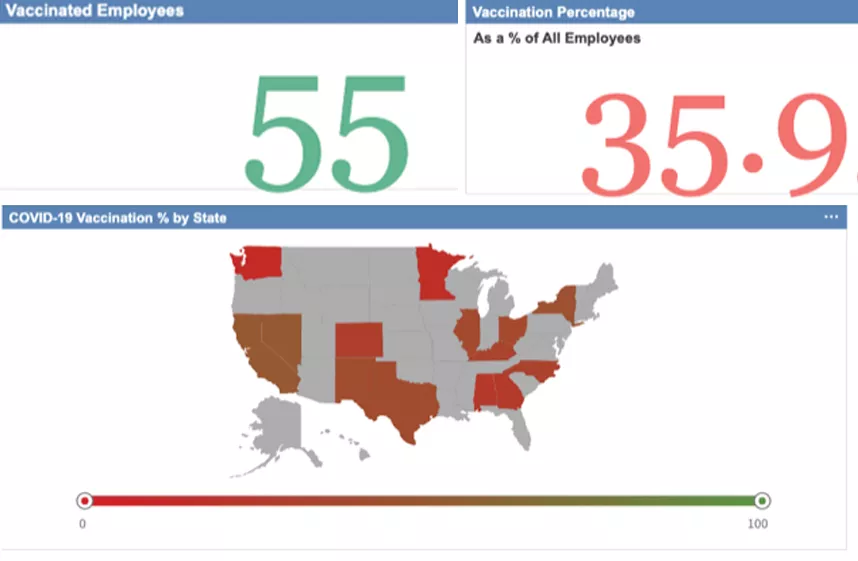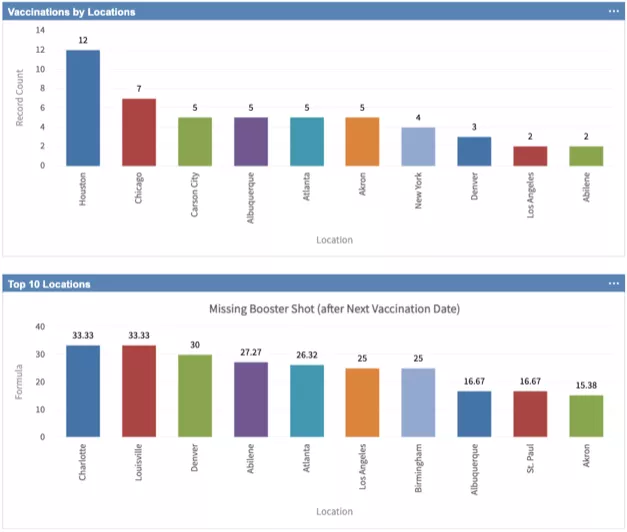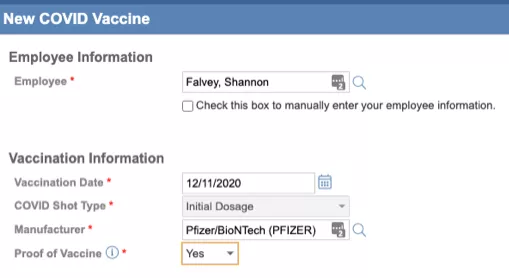Note: This blog, originally published in December 2020, covers the capabilities of Origami's Business Insurance Innovation Award-winning COVID-19 solution suite. The features and functionality of that suite are now available as part of our Employee Health and Medical Surveillance solution.
OSHA reporting COVID-19 regulations on exposures and outbreaks have become increasingly more complex, with new state-specific regulations further complicating the matter. Meanwhile, the rollout of the vaccine poses possible hurdles that employers will need to resolve sooner rather than later. This is where Origami’s new outbreak and vaccine tracking solutions come in.
The pandemic threw all types of organizations into a fluid and murky regulatory environment with significant consequences for non-compliance. As employers have grappled with continuous changes to Occupational Safety and Health Administration (OSHA) regulations on the federal level since the outbreak, they are now forced to deal with new state-specific requirements, some of which are already in effect or take effect January 1. Complicating the situation further, much of the reporting is difficult to manage and automate with regulations changing rapidly or having vague criteria, such as identifying whether a COVID-19 case meets the definition of a “serious injury or illness.” Additionally, OSHA does not currently support the electronic reporting of COVID-19 cases.
At the same time, the rollout process of the COVID-19 vaccine has begun. While its speedy development is being heralded as the largest advancement in modern medicine in over a century, its expeditious creation means employers need to prepare rapidly as well.
With the coronavirus continues to pose many new challenges to businesses almost a year after the first reported cases, and the advancement of a vaccine being one of them, what strategies do organizations need to begin thinking about if they want to manage 2021?
A Fluid Federal Regulatory Landscape
OSHA’s shifting federal guideline updates, outlined in detail in COVID-19 Reporting: An Employer’s Nightmare, have added further complexities to organizations’ responses to the pandemic. One of which being that the employer, at the federal level, is responsible for figuring out whether a COVID-19 exposure occurred at one of their locations. This means organizations are left to make educated guesses as to whether a case is tied to their location, and in cases where a guess is incorrect, they are open to liability, citation, and penalties.
“It’s a very difficult and onerous task to determine whether or not a COVID-19-positive case was work-related,” said Gina Fonte, a Boston attorney who specializes in workplace safety. Laura Lawless, a trial lawyer who represents employers in matters occurring under federal and state employment laws, clarifies when employers are liable in an article for The National Law Review.
According to Lawless, the recording or reporting of a work-related injury, illness, or fatality, even in the case of COVID-19, does not mean that the “employer or employee was at fault, or that an OSHA rule has been violated, or that the employee is eligible for workers’ compensation or other benefits.” She further states that there is no automatic liability for the reporting or recording of a workplace illness like COVID-19.
However, “employers’ failure to report known or suspected work-related COVID-19 diagnoses may have significant regulatory consequences,” leaving employers in a bid to determine what is even reportable.
The State Reporting Labrinth
Grappling with frequent amendments to plans and procedures in a bid to remain compliant with fluid federal regulations, employers’ are now dealing with the multiple new state-specific requirements around exposure and outbreak reporting.
There are 28 OSHA-approved State Plans that operate statewide occupational safety and health programs. Of these [28] states, several[...], including specifically California, New Mexico, and Virginia have taken varying positions on COVID-19 case management, resulting in distinct reporting requirements. - The OSHA Law Blog
A map depicting states that have adopted OSHA-approved State Plans for private and/or state/local government workplaces, and those without State Plans. Source 12/08/2020: OSHA.gov/stateplans/
Closer examination of the California, New Mexico, and Virginia regulations see new, stricter OSHA reporting COVID-19 requirements on case management, some of which pose limitations for automation and increase manual workloads on already stretched headcounts. While New Mexico’s focus is more on exposure tracking and is already in effect, California and Virginia will begin imposing reporting requirements around outbreaks starting January 1. Some of these new requirements being:
- A report must be made within 4 hours of the employer's knowledge of a confirmed case meeting the reporting requirements in New Mexico, 8 hours in California, and 24 hours in Virginia.
- All employee COVID-19 cases need to be reported in New Mexico, while Virginia only requires reports for cases that are part of an outbreak
- Cases may need to be reported even if work-related determination is uncertain (California)
- A test may or may not be required to confirm a COVID-19 case (California)
- Clusters or outbreaks of cases, considered as three or more employees within the workplace testing positive within 14-day period, must be reported (Virginia)
- A COVID-19 case must be reported if it meets the definition of a “serious injury or illness,” regardless of exposure date (California)
Outside of OSHA’s federal and state requirements, employers have numerous other coronavirus reporting regulations. Meaning, “for any given COVID-19 case, an employer may have a reporting obligation to (i) federal OSHA, or the state equivalent, (ii) state or local public health department, and corresponding notification obligations to (iii) employees and (iv) applicable third parties – all within strict timelines, “ according to The OSHA Law Blog.
As organizations grapple with rising COVID-19 infection rates compounded with increasingly complex reporting requirements, the odds of errors or non-compliance grow. A patchwork of unique state-level rules only makes the situation worse.
This leaves organizations in a bind with mere days left in the calendar year to figure out how they’re going to tackle new January 1 outbreak reporting regulations. For employers with locations in a state (or states) with additional regulations, the complexity multiplies, increasing the possibility of compounded liability, regulatory consequences, fines, and more. Additionally, there is potential for more states following in tow and adopting their own specific regulations in 2021.
The Vaccine Is Ready, Are You?
While the vaccines may signal a way out of the pandemic, a vaccination program poses numerous challenges for employers in 2021, some of which are very unclear at this stage. As we’ve seen with the rapid development of COVID-related regulations, however, employers need to be prepared to react quickly or suffer potential consequences.
In a bid to pivot quickly, employers need to begin asking a host of questions to determine what the vaccination program means for their organization, employees, and risk and compliance teams. Then they need to decide how they’ll go about solving those challenges.
Can we mandate the vaccine? Will there be reporting requirements around employee vaccinations? If so, will they be federal, state, and/or local, and are we prepared to handle them? How do we track employees' vaccinations? What if an employee waives the vaccine for religious or health reasons? What would an employee vaccination report need to consist of?
As the conversation around what tracking a vaccination program means for businesses begins to take shape, the looming onset of state-specific reporting requirements poses an immediate regulatory and compliance burden to businesses.
Origami’s Newest COVID-19 Solutions
In continued collaboration with clients and our product team, Origami Risk has added two new solutions to our award-winning COVID-19 Solution Suite—outbreak tracking and vaccine tracking.
Outbreak Tracking
In response to the newly outlined state regulatory requirements for increasing OSHA reporting COVID-19, Origami Risk has developed an Outbreak Tracking Solution that aids in complex reporting regulations and features:
- Identification and notification of three or more cases in a 14-day period at a single location (the generally accepted definition of an outbreak)
- Ability to track* when certain parties (including employees, OSHA, local health departments, etc.) were notified about a potential outbreak
- Location-based metrics that enable users to easily review location-specific COVID-19 statistics related to cases and outbreaks
Configuration of a COVID-19 cases dashboard with visualization of cases by state, cases by location, and outbreak trend over a 60-day period
A view of the Potential COVID Outbreak report page, which details location of a potential outbreak, linked employees, number of cases and their time period, and more.
Vaccination Tracking
Origami Risk has developed a new solution to track employees’ COVID-19 vaccinations that includes:
- Mobile intake capability
- Tracking of initial employee dose and subsequent booster doses, or notation of whether a vaccination has been waived with recorded reason and documentation
- Additions to the standard COVID-19 dashboard and reporting widgets for visualizing and analyzing client-specific data
- COVID-19 and Vaccination statistics dashboards with the ability to set vaccination goals per location that can be tied to a date
Widgets on the COVID-19 Vaccine Dashboard visualize and call out data like percentage of employee vaccinations by state, number of vaccinated employees, and percentage of workforce vaccinated.
Additional widgets on the COVID-19 Vaccine Dashboard include bar graphs of vaccination by location and top 10 locations with employees missing a booster shot.
The vaccine tracking intake page allows users to tie a report of vaccination to the employee record and includes date of vaccination, shot type (initial dosage, booster, etc.), manufacturer, whether proof of vaccine was provided, or if the vaccine was waived (with additional input of reason and supporting documentation).
Heading into 2021, employers are looking at a complex regulatory environment and questions around the rollout of the vaccination are compounding the situation.
Features and functionality of our award-winning COVID-19 solution suite are now available as part of our Employee Health and Medical Surveillance solution.
*Note: Origami Risk does not handle the reporting of COVID-19 cases or outbreaks to regulatory authorities, OSHA, health departments, employees, etc.
